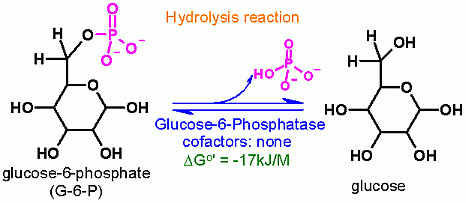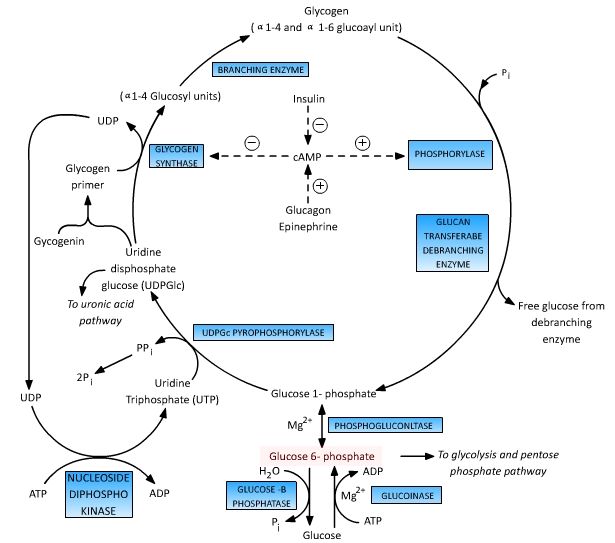what does glucose 6 phosphate do Glucose phosphatase representation deficiency phosphate translocase enzymes genes
Today, I want to talk about an important molecule called Glucose-6-phosphate. It plays a crucial role in our body’s metabolism, specifically in the process of glycolysis. Glycolysis is the breakdown of glucose to produce energy in the form of ATP. Understanding how Glucose-6-phosphate is formed and utilized is essential to comprehend the intricacies of this energy production pathway.
Glucose-to-Glucose-6-Phosphate
 In order to get a better picture of how Glucose-6-phosphate fits into the grand scheme of things, let’s start by understanding the conversion of glucose to glucose-6-phosphate.
In order to get a better picture of how Glucose-6-phosphate fits into the grand scheme of things, let’s start by understanding the conversion of glucose to glucose-6-phosphate.
Glucose, a simple sugar and one of the primary sources of energy for our body, undergoes a series of reactions to transform into glucose-6-phosphate. The image above provides a visual representation of this conversion process.
Glucose-6-phosphate is produced by the enzyme hexokinase, which adds a phosphate group to glucose. This reaction is essential for two reasons. First, it traps glucose within the cell since the added phosphate group prevents glucose from leaving the cell membrane. Second, it allows the subsequent breakdown of glucose in the glycolytic pathway.
Importance of Glucose-6-Phosphate
 Now that we understand how Glucose-6-phosphate is formed, let’s dive into its importance in various metabolic processes.
Now that we understand how Glucose-6-phosphate is formed, let’s dive into its importance in various metabolic processes.
Glucose-6-phosphate serves as a precursor for the synthesis of different biomolecules, including glycogen and nucleotides. Through the process of glycogenesis, glucose-6-phosphate is transformed into glycogen, our body’s storage form of glucose. This glycogen can then be broken down back into glucose when energy demand is high.
Furthermore, glucose-6-phosphate is a critical intermediate in the pentose phosphate pathway. This pathway produces NADPH, a coenzyme that plays a crucial role in protecting cells from oxidative stress by acting as an antioxidant. Additionally, NADPH is essential for the synthesis of fatty acids and cholesterol, both of which are vital components in our body.
Conclusion
In conclusion, Glucose-6-phosphate is a key molecule in our body’s metabolic processes. It is produced through the conversion of glucose by the enzyme hexokinase. Glucose-6-phosphate has multiple roles, including serving as a precursor for glycogen synthesis and playing a crucial role in the pentose phosphate pathway for NADPH production. Understanding the importance of Glucose-6-phosphate helps us comprehend the intricate workings of our body’s metabolism and energy production.
References:
If you are searching about Glucose-6-phosphate | Sigma-Aldrich you’ve visit to the right place. We have 5 Pics about Glucose-6-phosphate | Sigma-Aldrich like Glucose 6 Phosphate : Central to Glucose Metabolism | Epomedicine, Glucose-to-Glucose-6-Phosphate - PhD Muscle and also Glucose-6-Phosphatase. Here you go:
Glucose-6-phosphate | Sigma-Aldrich
 www.sigmaaldrich.comdextrose monohydrate anhydrous glucose phosphate aldrich sigma organic sigmaaldrich chemical
www.sigmaaldrich.comdextrose monohydrate anhydrous glucose phosphate aldrich sigma organic sigmaaldrich chemical
The Glucose-6-phosphatase System. A Schematic Representation Of The
 www.researchgate.netglucose phosphatase representation deficiency phosphate translocase enzymes genes
www.researchgate.netglucose phosphatase representation deficiency phosphate translocase enzymes genes
Glucose-to-Glucose-6-Phosphate - PhD Muscle
 phdmuscle.comglucose phosphate interactions muscle
phdmuscle.comglucose phosphate interactions muscle
Glucose-6-Phosphatase
 clfs690.alivetek.orgglucose phosphatase phosphate reaction hydrolysis gif catalyzed
clfs690.alivetek.orgglucose phosphatase phosphate reaction hydrolysis gif catalyzed
Glucose 6 Phosphate : Central To Glucose Metabolism | Epomedicine
 epomedicine.comglucose phosphate metabolism glycogen enzyme glycolysis fate phosphorylase central epomedicine into formation converts
epomedicine.comglucose phosphate metabolism glycogen enzyme glycolysis fate phosphorylase central epomedicine into formation converts
Glucose-6-phosphatase. Glucose phosphatase phosphate reaction hydrolysis gif catalyzed. The glucose-6-phosphatase system. a schematic representation of the